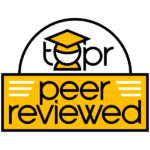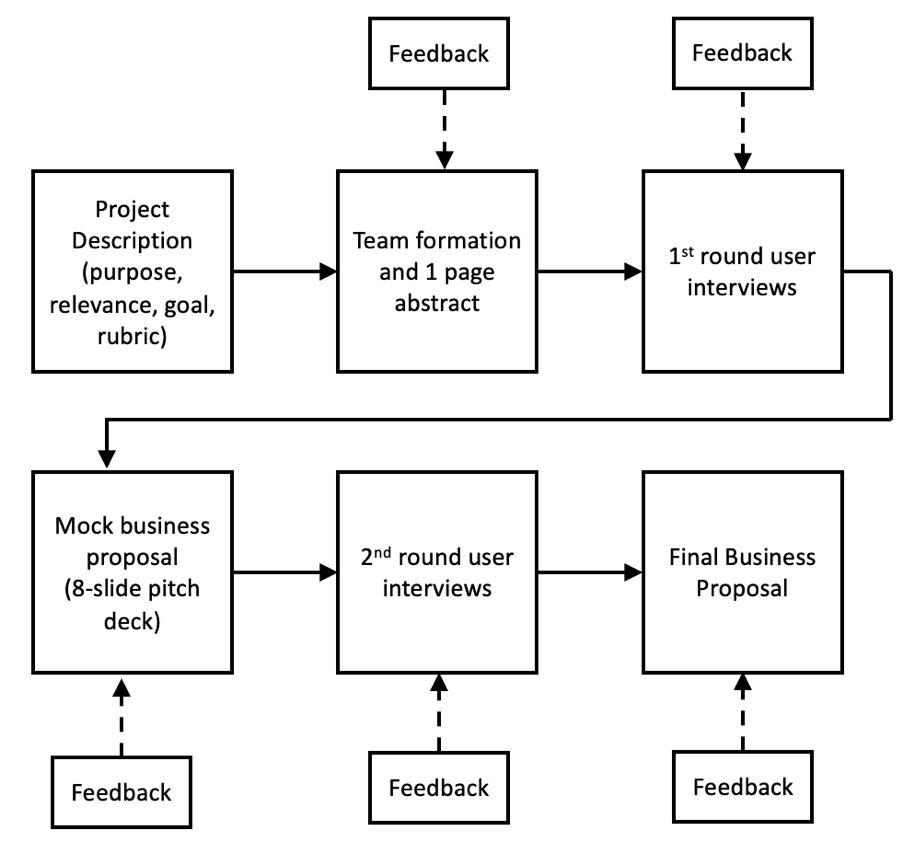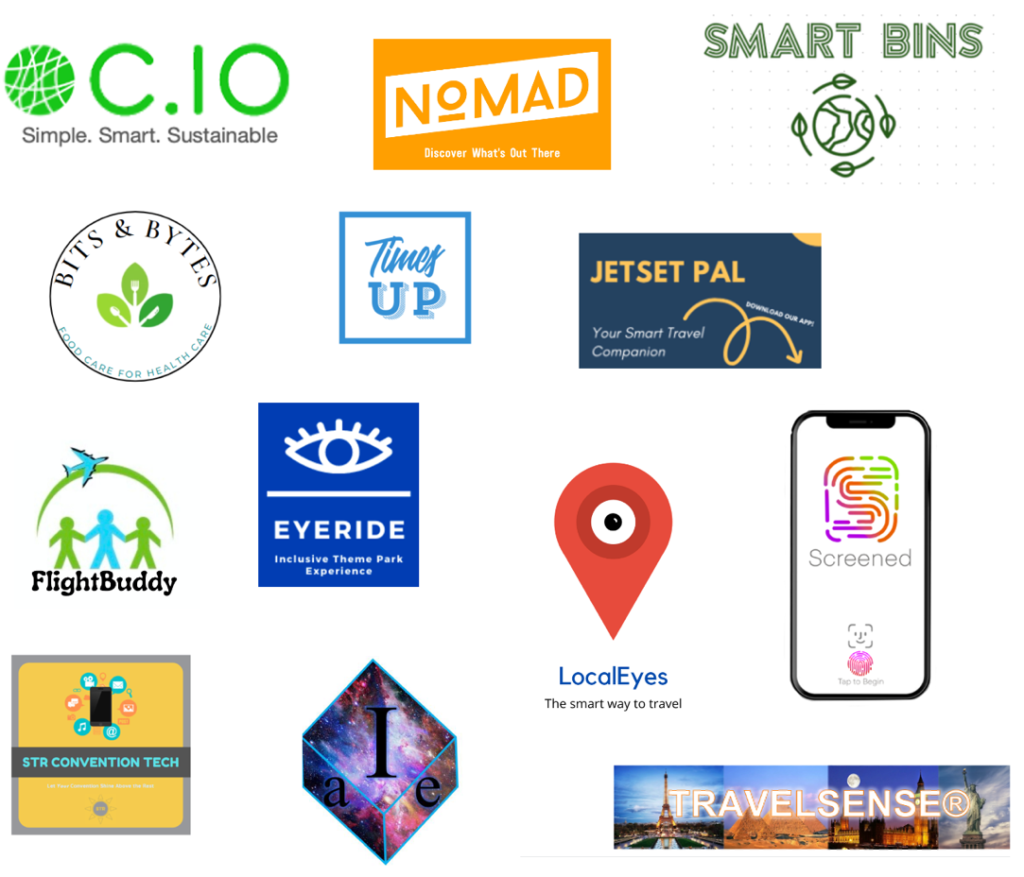
The current technology-infused and globalized job market is putting pressure on students to apply knowledge and use it to solve complex problems (Pham & Sampson, 2022). As a result, instructors in higher education often encounter difficulty in designing and guiding learning experiences that are relevant and like what students could face in their jobs (Talbert & Bergmann, 2017). To address that gap, many instructors apply experiential learning activities to not only provide relevant and authentic learning experiences but also to promote the development of high-order skills (e.g., problem-solving, entrepreneurship).
A business proposal/plan is a written document that details how a potential business wants to achieve its goal (Joseph et al., 2021). Business plan projects are widely used in business education (Malach, & Malach, 2014) as they are seen as useful to facilitate knowledge transfer and help prepare students to pitch their brand to potential investors. Business proposals have also been used in online courses that include technology as a core dimension of knowledge and can improve students’ collaboration, communication, creativity, and planning skills (Yoke & Ngang, 2017).
Link to example artifact(s)
We illustrate how to leverage a business proposal assignment to enhance students’ problem solving and entrepreneurship based on our experience with the online course HMG6449 (Smart Travel and Tourism) taught at University of Central Florida. We explain the purpose and steps of the assignment. We also provide artifacts and share the outcomes of the assignment after its implementation in Fall 2022.
Description of the Assignment
Explain to students why the business proposal is relevant for their future careers. Highlight that the business proposal will allow them to articulate their long-term goals by creating an original and potentially feasible business opportunity based on their skills and interests. Include a list of knowledge, skills, and abilities relevant to the specific industry sector. Ideally, you would want to encourage group work since it is probed to lead to more creative and innovative products. However, some students might prefer to work individually to have more flexibility and control over the project (especially in online/mixed-mode courses). Briefly summarize the different steps of the assignment and present its goal (see Figure 1).

Fig. 1. Business Proposal Assignment
Location of the Assignment
In the HMG6449 course, the business proposal project was presented in a separate module on top of the module pages (See Figure 1) which allowed students to quickly see the deadlines for each step of the project and quickly navigate to the directions and rubrics. In addition, the instructor provided reminders within the content modules of which deliverables were due for the week. It is important to note that the reminders were included in the modules as webpages, which turn, directed students to the specific assignments available in the business project module. This strategy was taken based on students’ feedback provided in prior course sections highlighting that a specific module for the project would facilitate access to the project’s resources, directions, rubrics, and submission pages.
Team Formation and Brainstorming
Discuss with students their initial ideas since some propounded solutions might not be feasible, could be unrealistic, or could simply lack common sense. To maximize the impact of the proposed businesses, you can ask your students to come up with a team/company name and submit a one-page abstract summarizing your initial business idea. You can clarify that their initial business idea can evolve, so it does not happen to be perfect at first. The abstract is intended to show how each team/student is making progress. The crucial aspect of this stage is providing personalized feedback.
Revision/feedback on Initial Business Idea
Here is an example of how written feedback was provided to an initial idea developed by students to create a gamified app for travelers:
Thank you for sharing your initial idea. Research suggests that travelers’ sustainability awareness is generally increasing among the younger generation of consumers. Uses cases show that T&H businesses are increasingly using gamification strategies (apps with points, rewards, leaderboards) to promote customers’ engagement and brand awareness. Combining both ideas to promote sustainability behaviors and consumer engagement sounds promising. Please keep developing your idea and be more specific about the product/service that you will offer. At this point, it is not clear to me if you are thinking about developing a technological service (e.g., H&T businesses under a B2B model) or a social tool under a B2C model for consumers. You can start conducting some Internet searches to get some inspiration by seeing similar solutions (e.g., scavify) and identifying the gaps. Great work on your initial business idea!
Ask students to conduct consumer discovery through rounds of user interviews
User interviews are intended to explore users’ current journeys in a service, identify unknown needs, and provide insights to inform the design of students’ technological products or services. Recommendations for implementing include:
- Require students to complete one or two rounds of interviews. Each team member can interview 2 potential users of the propounded product/service to understand the user’s needs and to surface unknown needs and insights, not to get reactions from the work or ideas.
- Provide your students with an interview template to exemplify how the interview report should be organized.
- Provide a few complementary resources (e.g., videos) related to creating a journey map, and how to ask a question: get better answers as supplementary materials for students to dive deeper into the interview process.
Ask students to prepare a pitch deck
After potential users’ interviews, ask each team to record a mid-term project pitch talk. Each team is asked to create an up to 5-minute 8-slide presentation video of a mock business proposal accompanied by audio explanations and upload it to the online course. Invite external audiences (e.g., venture capitalists from local investment firms, and industry experts) to provide feedback on the team presentations. Provide examples of successful startups pitch decks. Provide a rubric to guide students’ performance.
Solicit students to submit a business proposal draft
The last stage consists in submitting the final business proposal. Students can be provided with an outline to summarize their business planning decisions. Students can also be encouraged to title each section of their written plan as indicated in the outline and write using their own words answers to the questions listed. A rubric is fundamental to guide the writing of the business proposal.
We found useful reminding students that they do not have to win a Pulitzer Prize but focus on selling their ideas in a compelling way. You can also provide a few examples and nonexamples of prior students’ submissions to help them visualize the required performance in the assignment.
Outcomes of the Learning Experience
Our experience implementing the business proposal assignment was positive. Students developed their ideas, creativity, and research skills to create amazing ideas on new products, services, and technologies with potential to be founded and marketed in the tourism and hospitality industry. Designed products and services included:
- Gaming app based on AR technology that can be downloaded into mobile or another digital gadget to explore destinations.
- Mobile app that makes the travel planning experiences fun and accessible.
- Autonomous and AI-enabled trams/carts that can be rolled out to airports.
- Robotic assistant that provides guests with easy access to both room supplies and room service throughout their stay.
- Full-service virtual check-in kiosk applications.
- AI-based systems to streamline the process of handling food allergies and dietary restrictions.
- Smart luggage tags that utilize biometric sciences to track and locate the items.

Students’ perceptions
Students’ reflective essays indicated they the business proposal assignment was effective for the development of soft skills: teamwork, interviewing skills, entrepreneurship, creativity, communication, leadership, and collaboration, and team commitment. Students also mentioned that the business proposal assignment was relevant for their future professional life, facilitate transfer of class knowledge to real-life practice and social impact, and provided meaningful student-student and student-instructor interactions. Some students identified a few challenges, including difficulty in matching group members’ schedules and differential contributions of group members.
Summary
Online instructors could leverage business proposal assignments to develop students’ soft skills, facilitate transfer classroom knowledge to industry, and to enhance students’ entrepreneurship/creativity. By including formative feedback and well-designed rubrics to guide students’ efforts, business proposal assignments can help learners to exercise creativity, innovation, entrepreneurship, and potentially find investments in the future to growth their companies and follow their professional dreams.
Link to scholarly references
Joseph, C., Hossen, R., Rahmat, M., Noyem, J. A., & Ho, V. B. (2021). Exploring the readiness for business proposal pitching video activity using the competition-based Learning Model among Accounting Students. International Business Education Journal, 14(2), 13-24.
Malach, S. E., & Malach, R. L. (2014). Start Your own business assignment in the context of experiential entrepreneurship education. Journal of Higher Education Outreach and Engagement, 18(1), 169-186.
Pham, S. T., & Sampson, P. M. (2022). The development of artificial intelligence in education: A review in context. Journal of Computer Assisted Learning, 38(5), 1408-1421.
Talbert, R., & Bergmann, J. (2017). Flipped learning: A guide for higher education faculty. Routledge.
Yoke, T. C., & Ngang, T. K. (2017). A study on soft skill development among final year diploma in business studies students. MOJEM: Malaysian Online Journal of Educational Management, 3(2), 32-50.
Citation
de la Mora Velasco, E., & Huang, A. (2023). Using a business proposal to develop students’ problem-solving skills and entrepreneurship. In A. deNoyelles, A. Albrecht, S. Bauer, & S. Wyatt (Eds.), Teaching Online Pedagogical Repository. Orlando, FL: University of Central Florida Center for Distributed Learning. https://topr.online.ucf.edu/using-a-business-proposal-to-develop-students-problem-solving-skills-and-entrepreneurship/.